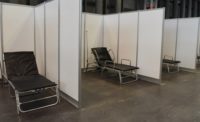Michael Govan, director of the Los Angeles County Museum of Art (LACMA), created a buzz in museum circles earlier this year when he expressed an interest in acquiring canonical, Midcentury Modernist houses for his institution’s collection. As detailed by The New York Times on March 15, Govan’s plan would preserve L.A.-area houses as in situ satellites of the museum.
Although the idea is hardly new, his remarks generated considerable excitement. But Govan has since retreated from his original statements. He declined to comment for this story. LACMA’s president and C.O.O. explained the museum’s current position. “Eventually, we would love to collect houses and preserve them,” Melody Kanschat says. “But we don’t have any plans.”
Plans or not, the possibility that LACMA might one day collect notable houses sparked a dialogue about the role of art museums today. Richard Koshalek, president of the Pasadena Art Center College of Design, is no stranger to unorthodox collections. While a curator at L.A.’s Museum of Contemporary Art, he acquired Michael Heizer’s Double Negative (1969–70), a Nevada earthwork whose trenches are as long as the Empire State Building is tall.
“I applaud Michael,” Koshalek says. “L.A. has an unbelievable resource in these houses, including Neutra, Wright, Gehry, and Schindler. They deserve this attention.” Citing the need to share the responsibility for preservation with other institutions, including the National Trust, he adds that he is convinced that this is a necessary step for museums. “If the museum is to be relevant, it has to extend beyond the range of current responsibilities. It cannot be limited by scale.”
Proving this point, Paola Antonelli, curator of design at the Museum of Modern Art, New York, has long expressed interest in acquiring a Boeing 747 for her collection. The plane would operate normally and be made available for public viewing at a local airport—or in flight. MoMA also has a history of maintaining houses, including Richard Neutra’s VDL House and the Schindler House, both in L.A. “Museums must think beyond their buildings,” Antonelli says. “I’m so happy that LACMA is thinking of doing this.”




Post a comment to this article
Report Abusive Comment